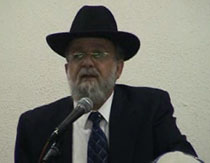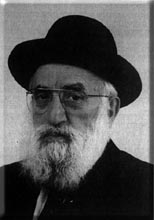Beit Midrash
- Torah Portion and Tanach
- Bamidbar
- Chukat
More on this later, but let us jump in the Sedra to another equally perplexing incident:
The nation becomes restless, dejected, short-tempered. They rebuke Moshe, bemoaning their fate: "Why did you bring us up from Egypt, to die in this wilderness? There is no food, no water; our souls are parched from this ruinous food (the Mahn, which dissolved after a day, and so is called 'Lechem Ha'k'lokayl,' the bread which spoils quickly)."
G-d then sends "fiery serpents" which bite the people. And so they apologize to Moshe, and beg that he prays for them and that the snakes be removed. Moshe does indeed pray, and Hashem instructs him to fashion a fiery serpent made of copper and place it on a pole. "Anyone who is bitten should star at the serpent, and live!" says Hashem.
What a wild story! So many questions: Why were the people davka attacked by snakes? Why/how did the copper snake protect them? Isn't the snake a very negative image; why should a flag be made of it?! Why didn't Hashem just remove the serpents, rather than let them continue to bite, and then provide an antidote? And certainly the play-on-words of the snake-on-the-pole's name, Nachash N'choset, must have some deeper significance!
Let's try to make some sense of this eerie episode. The snake is the lowest of all creatures - figuratively and literally. It crawls on the ground, like one who is pathetic and lowly. The snake in our story represents the low self-esteem of the people, an understandable leftover from their years as slaves and the lowest man on life's Totem pole. When you have low self-esteem, the negative things in your life are exaggerated, and even the positive things in your life are downplayed ("how can something good be happening to a low-life like me?!"). You worship a Golden Calf because you think you need a middle-man, a conduit to connect to Hashem, rather than you yourself. You argue against going into Israel, because you don't think you're capable of winning the battle. And you even reject the Mahn, because you doubt if you're worthy of such a miraculous gift.
What is the cure? It is to raise your vision, to walk with head held high, to inject a healthy dose of self-respect into yourself and appreciate that you are G-d's greatest creation. ""Bish'vili nivra ha-olam, for me the world was created!" you proclaim, as you turn your glance Heavenward. You don't destroy the snake, for that just masks the problem and delays the cure. Instead you raise it up and force people to look at it, to face their fears and self-doubt and to conquer them - like injecting the flu virus itself into your body to cure the flu!
This is the deeper meaning of "Nachash N'choshet." The disease contains the cure within itself. And this is also a key to the riddle of the Red Cow. The cow represents that first great national sin, the Egel HaZahav. So what do we do? We take that cow and convert it into the cure; instead of worshipping it, we kill it and transform it into something holy and therapeutic.
A Jew cannot remain depressed. Not when we have such a glorious history, not when we have Hashem. And so, if you ever feel down, just seek out G-d and things will always be looking up!

























